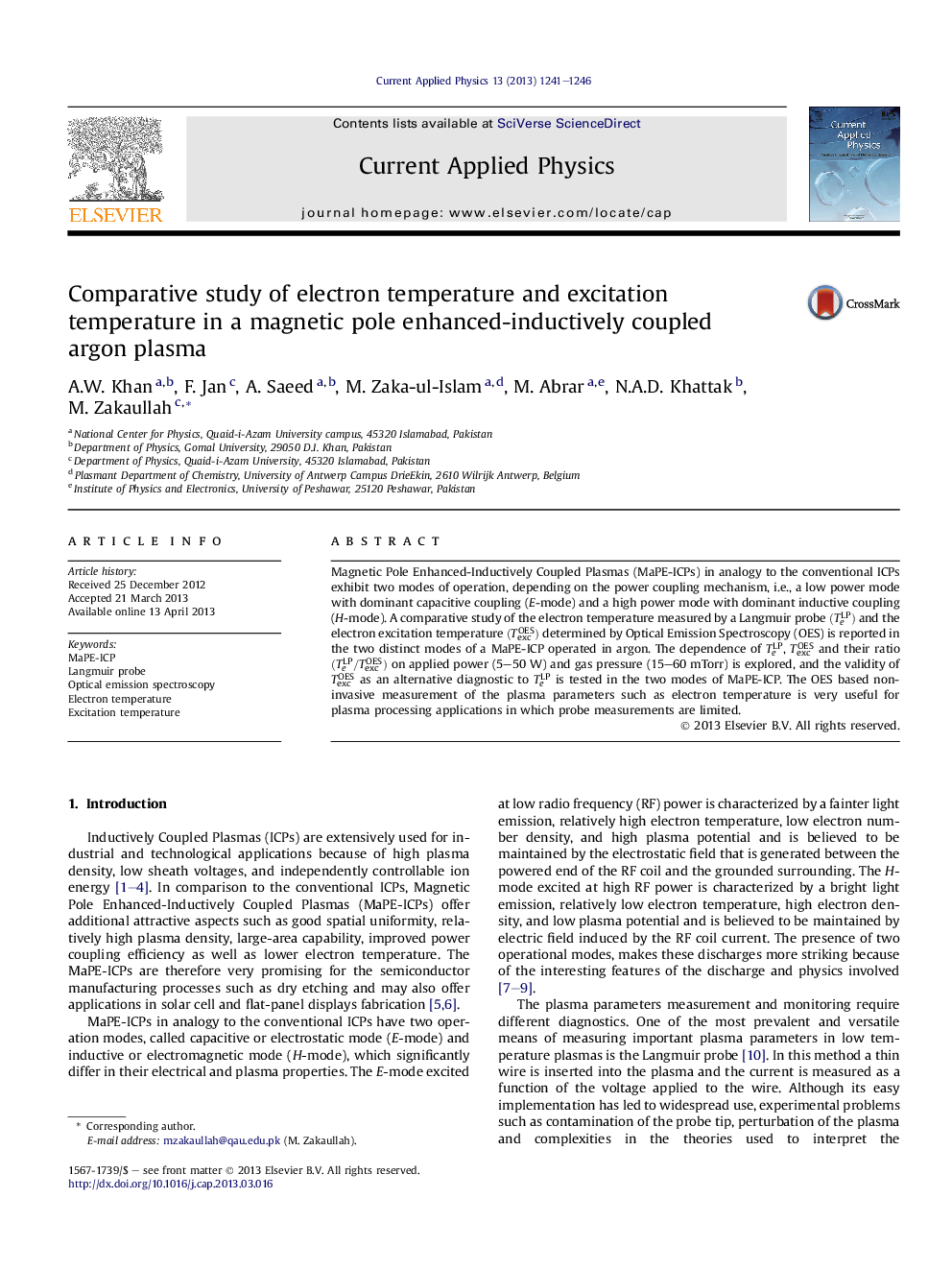| Article ID | Journal | Published Year | Pages | File Type |
|---|---|---|---|---|
| 1786427 | Current Applied Physics | 2013 | 6 Pages |
•MaPE-ICP source is operated in two distinct modes (namely E-mode and H-mode).•Comparative study of TeLP and TexcOES in the two modes of MaPE-ICP is reported.•TexcOES is found to be a good alternative for TeLP in H-mode but not in E-mode.•Mode transition (E/H transition) may also be verified by TeLP and TexcOES.
Magnetic Pole Enhanced-Inductively Coupled Plasmas (MaPE-ICPs) in analogy to the conventional ICPs exhibit two modes of operation, depending on the power coupling mechanism, i.e., a low power mode with dominant capacitive coupling (E-mode) and a high power mode with dominant inductive coupling (H -mode). A comparative study of the electron temperature measured by a Langmuir probe (TeLP) and the electron excitation temperature (TexcOES) determined by Optical Emission Spectroscopy (OES) is reported in the two distinct modes of a MaPE-ICP operated in argon. The dependence of TeLP, TexcOES and their ratio (TeLP/TexcOES) on applied power (5–50 W) and gas pressure (15–60 mTorr) is explored, and the validity of TexcOES as an alternative diagnostic to TeLP is tested in the two modes of MaPE-ICP. The OES based non-invasive measurement of the plasma parameters such as electron temperature is very useful for plasma processing applications in which probe measurements are limited.
